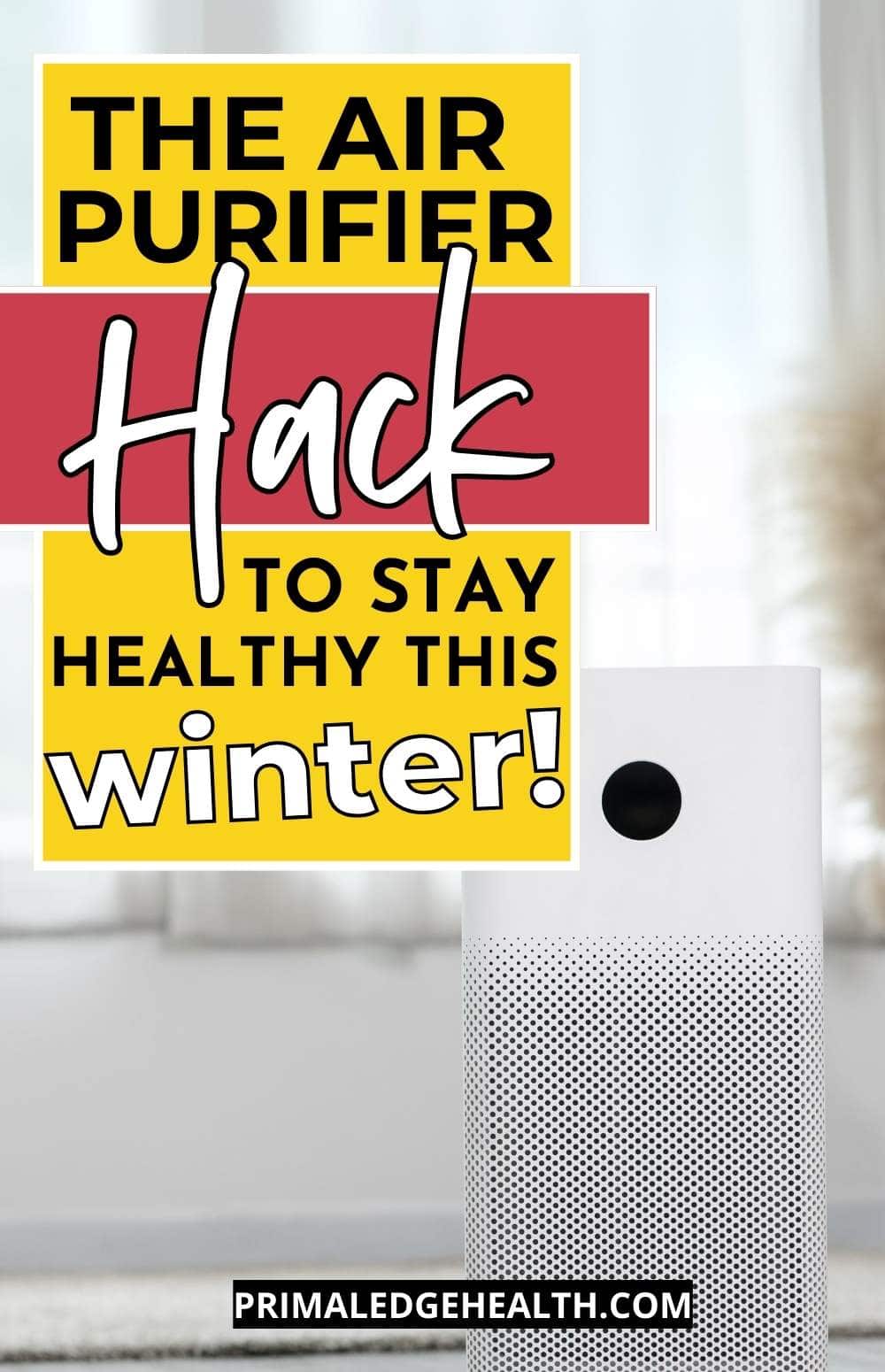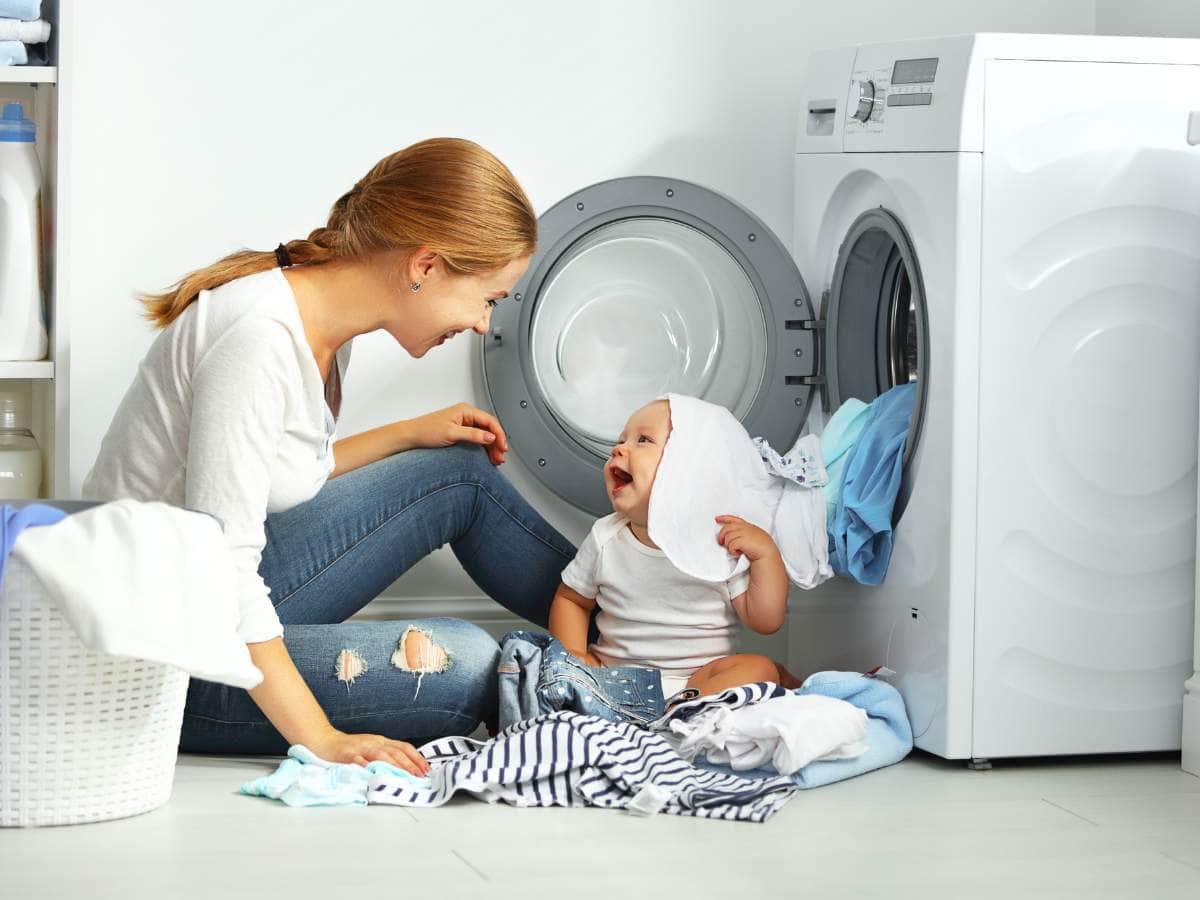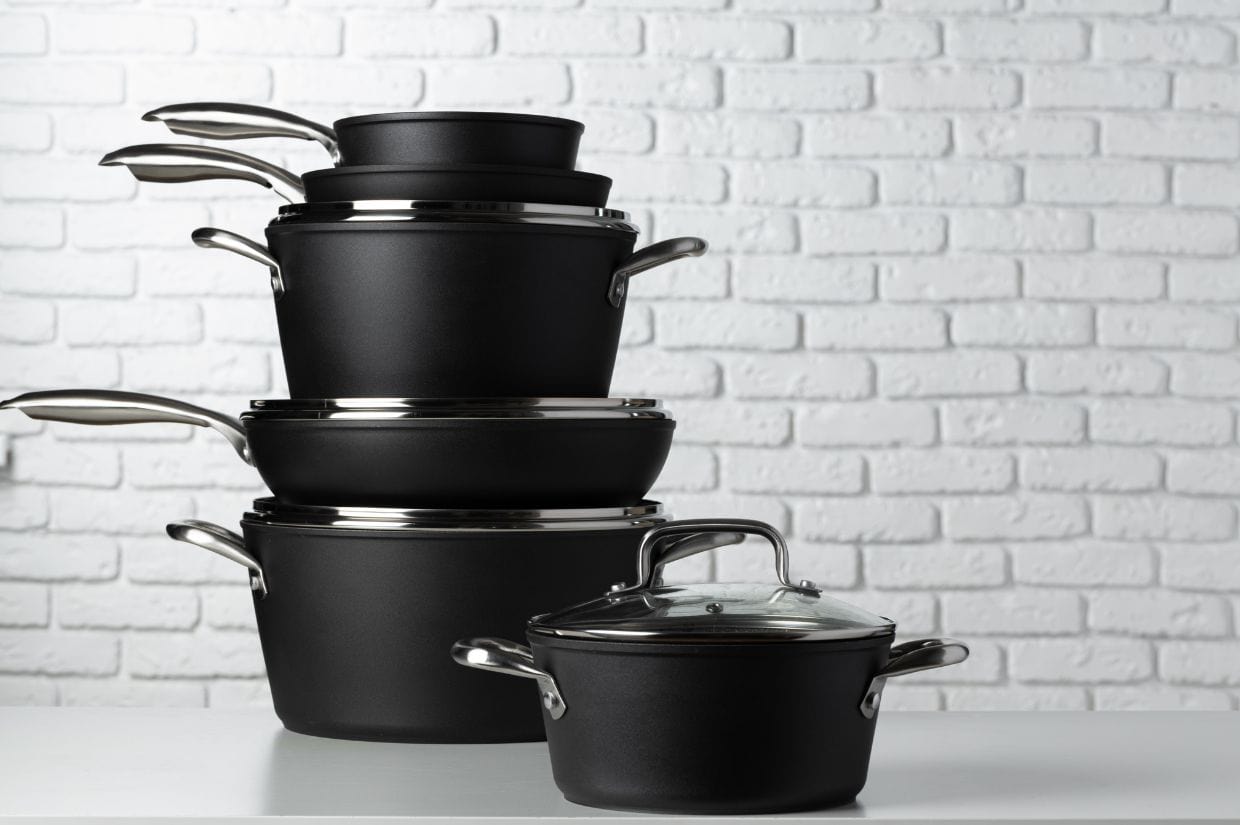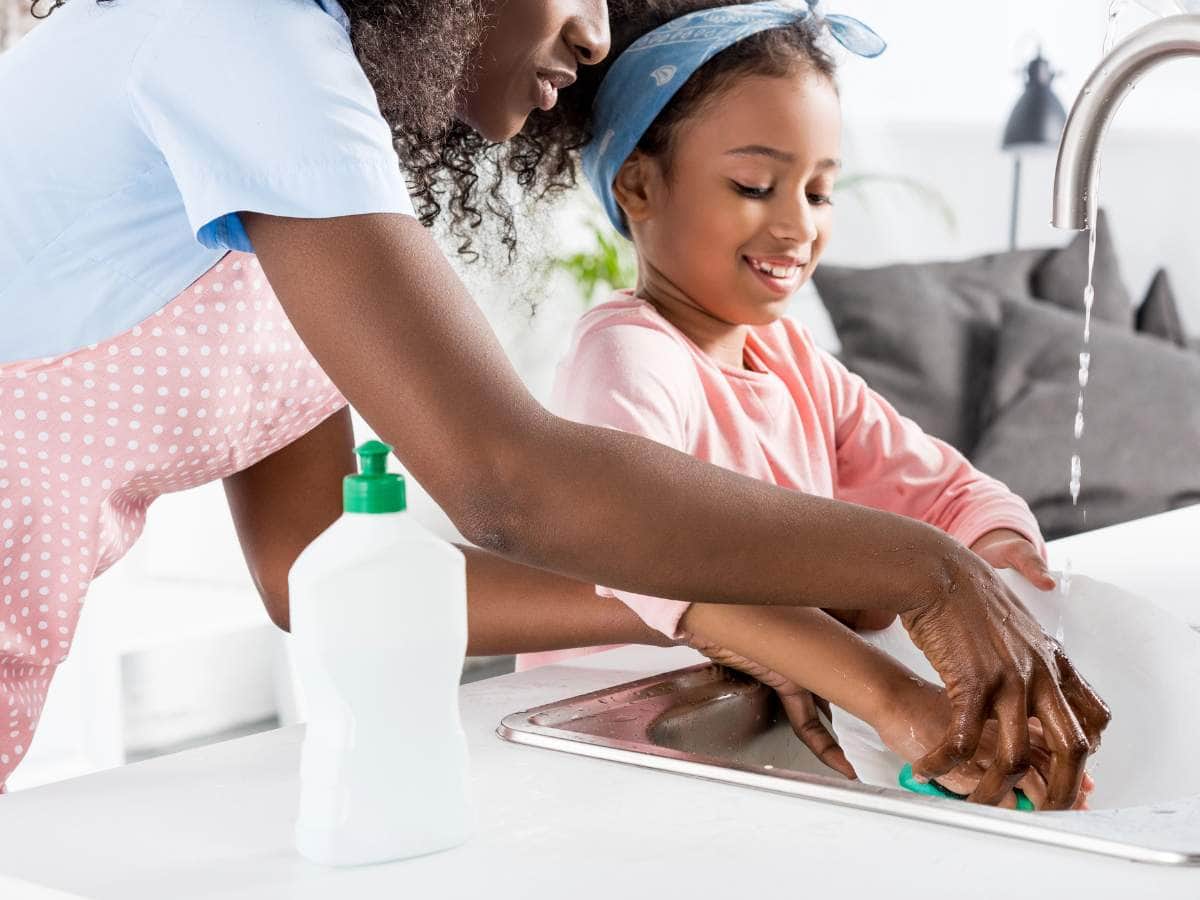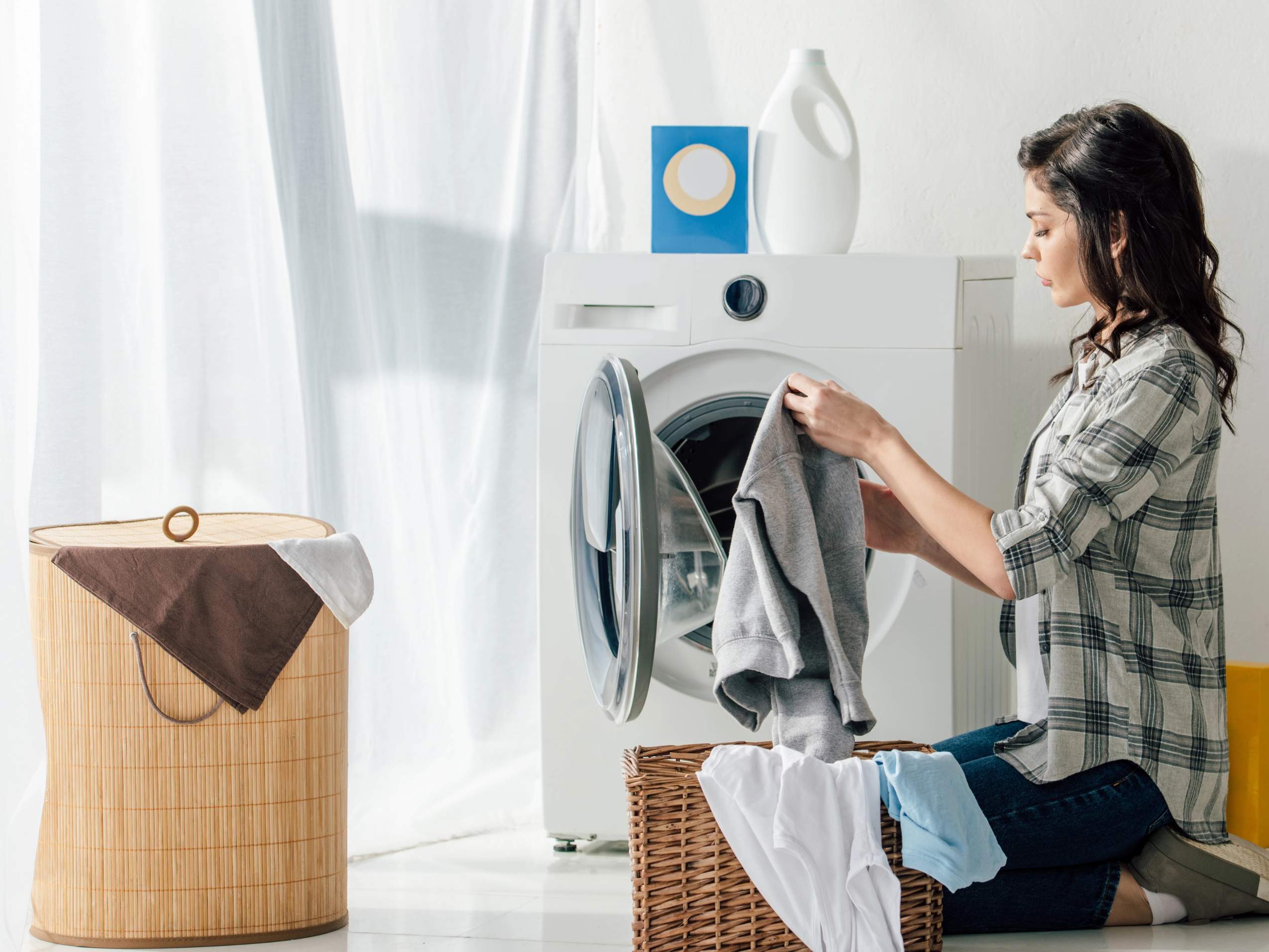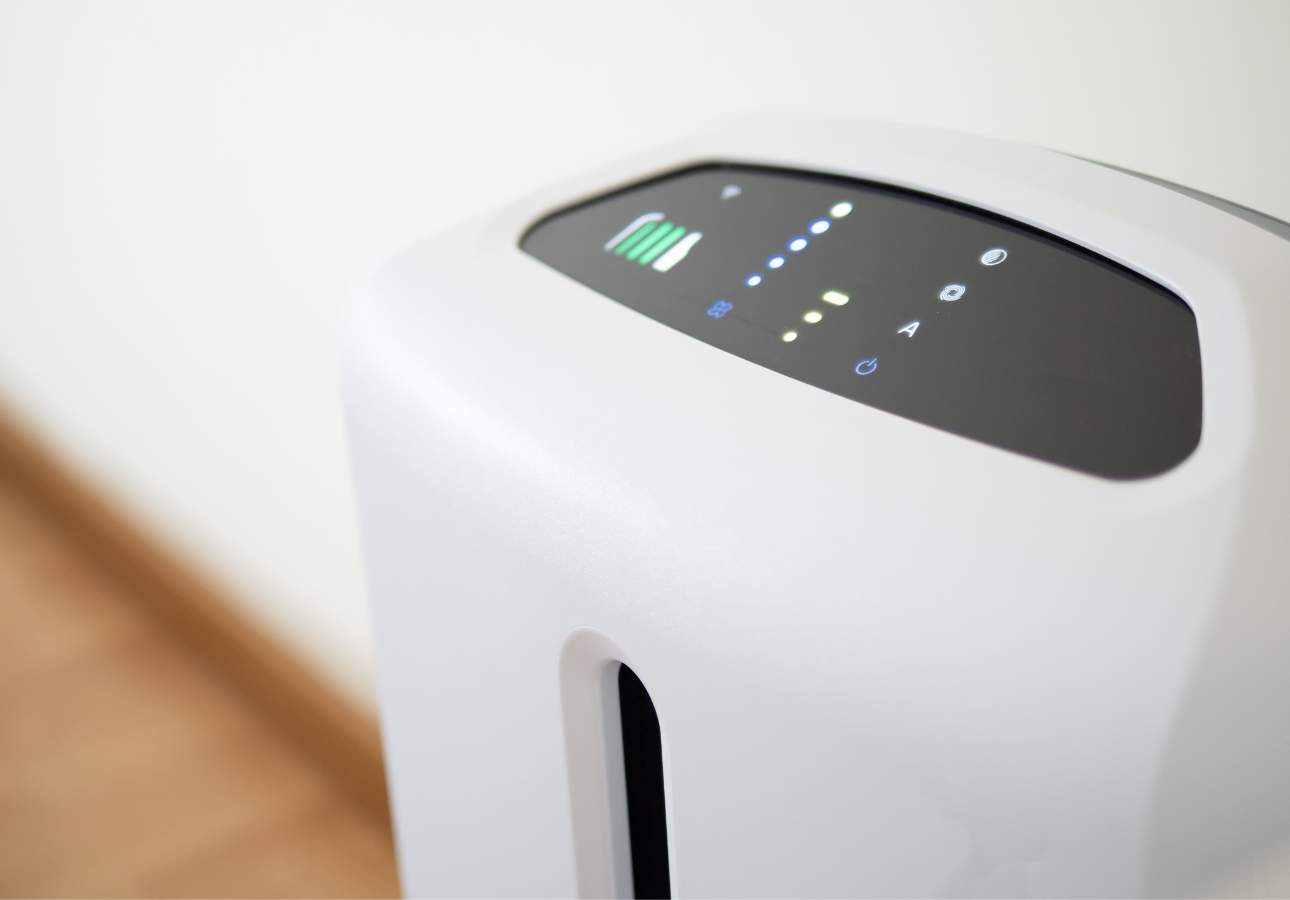Battling Winter Illnesses with Air Purifiers
Primal Edge Health participates in the Amazon Services LLC Associates Program and other affiliate programs and therefore, may collect a share of sales or other compensation from the links on this page. This comes at no additional cost to you, and all the prices and availability are accurate at the time of publishing.
As winter weather keeps people indoors, more exposure to poor indoor air quality in your home increases the risk of catching a cold or flu. Running an air purifier offers another line of defense in the fight against winter illnesses by removing the harmful particles that can make you and your family sick.
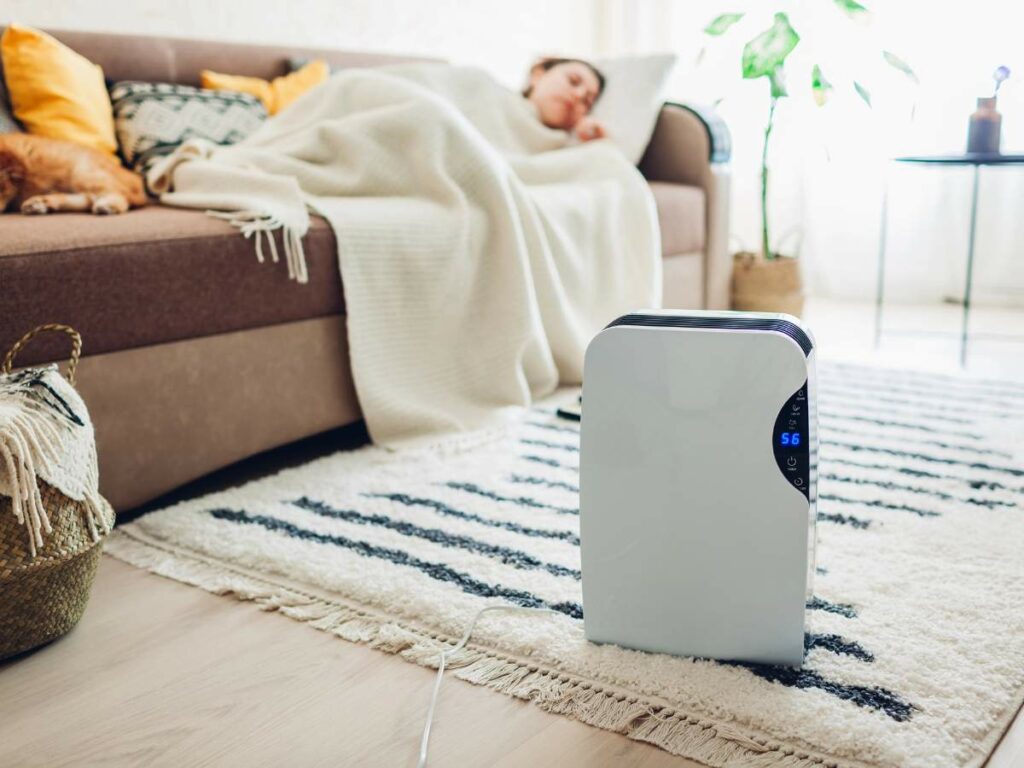
Last winter, my family seemed to catch every bug that went around. With two kids, it felt like our home had become a revolving door of colds and sniffles. I was constantly brewing tea, checking my medicine cabinet, and trying every home remedy under the sun, but nothing seemed to work.
Then a friend suggested we try using an air purifier. Skeptical but desperate, I bought one and set it up in our living room. Within a few weeks, I noticed a significant difference. The air felt fresher, and the kids’ persistent coughs started to ease up.
Should an air purifier be on your holiday wishlist? Let’s talk about how it can help you fight off those pesky winter colds.
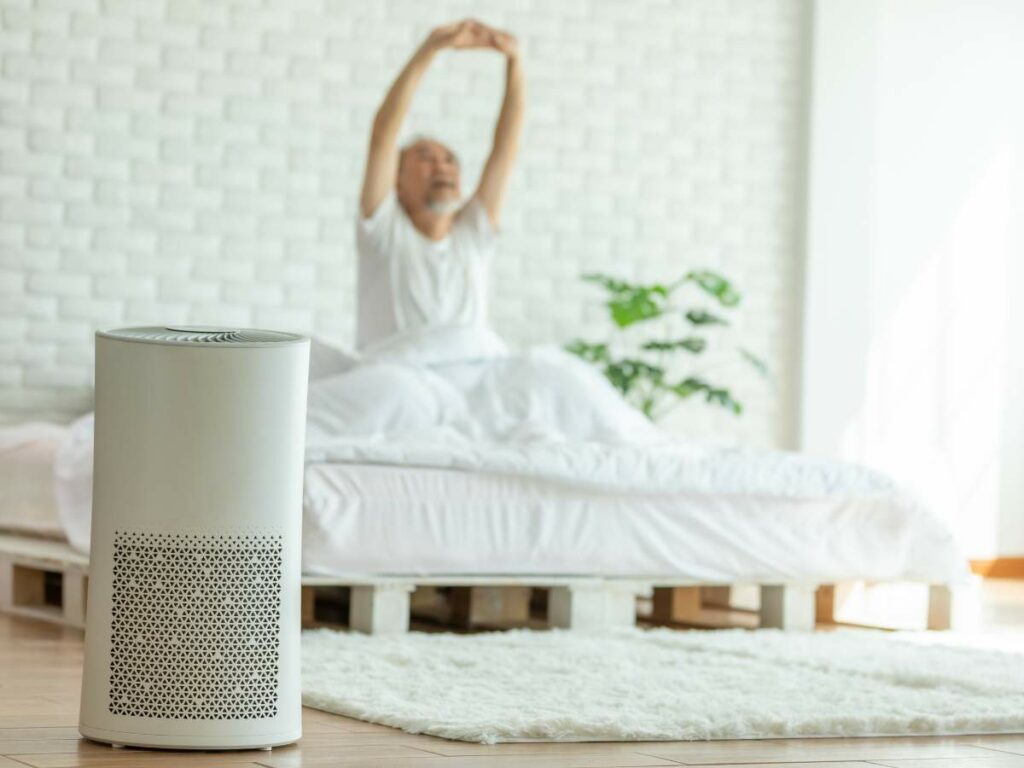
Table of Contents (click to view)
Why Indoor Air Quality Gets Worse During the Winter
The average home contains a variety of air pollutants. Dust, dander, bacteria and other germs circulate through the air all year long. Respiratory droplets, the tiny water particles that coughing, sneezing and even breathing release, travel through the air, potentially carrying viruses that could cause the flu.
Keeping the air in your home healthy is always a good idea, but it becomes especially important in the colder months. In winter, people spend more time indoors, increasing their exposure to these pollutants. Many families also seal their homes up tightly to help keep cold air out, but this keeps germs, dust, and smells from baking and cooking dishes like chicken and dumplings locked inside.
The lack of ventilation and more contact with germs makes you more likely to get sick in the winter, explains the team at Oransi, a leading air purifier manufacturer. In addition, poor indoor air quality can make these illnesses more severe and make recovery take longer if you do get sick.
How Air Purifiers Can Prevent Respiratory Illness
Removing harmful pathogens is key to keeping your air clean. This is where an air purifier can help. As the air in a room circulates, the air purifier traps the particles and releases the clean air back into the room.
Erin Bunch at Well+Good spoke with epidemiologist Dr. Timothy Brewer, MD, who notes that “There is at least laboratory data to suggest that these filters are capable of removing viral-infected respiratory droplets from the air.” Reducing respiratory droplets and other airborne particles will limit your exposure to germs in your home, lessening your risk for colds, Covid-19 and other illnesses.

The Right Type of Air Purifier for Winter Illnesses
With many types of air purifiers on the market, it is important to choose one that will be effective against the pathogens that cause winter illnesses. Choose a brand that makes a variety of products, and always look at reviews before purchasing.
Some brands, like Medify Air, specialize in home air purifiers. These are some options to keep in mind when selecting an air purifier.
HEPA Filters
Some of the most effective air purifiers against cold-weather illnesses are those that have high-efficiency particulate air filters or HEPA filters. These filters capture microscopic particles that are less than 0.3 microns in diameter, according to Dr. Brewer.
This means that they can remove many of the viruses, bacteria and dust that lead to illness. HEPA filters are available in portable air purifiers and for HVAC systems.
Carbon Filters
Activated carbon filters are highly effective at improving indoor air quality by removing a wide range of contaminants, as evidenced by this study on SageJournals. These filters are made from carbon treated to create a network of tiny pores, which trap pollutants like volatile organic compounds (VOCs), chemicals, and odors from smoke, cooking, and pets.
In addition to odor and chemical removal, activated carbon filters complement HEPA filters by adsorbing smaller organic compounds that might escape other filtration methods. However, keep in mind that regular replacement of these filters is essential to maintain their effectiveness, as they can become saturated over time.
UV Germicidal Lights
Another air purifier option is a UV germicidal light. DeHart Plumbing, Heating, and Air Inc. recommends installing a UV germicidal light in your ductwork. Ultraviolet air purifiers work as a whole-house air purification system against winter illness. As air passes the light, UV radiation kills bacterial and viral cells, making the germs in your indoor air harmless.
Air Purifier Size
Whatever type of air purifier you choose, you will need one big enough for your space. Smaller, stand-alone air purifiers can keep the air clean in a single room, such as in a living room or bedroom. For larger, whole-house air purifiers, your local HVAC company can help you choose which air purification system is most effective against the pollutants in your home.
Smart Features
Modern air purifiers often come with smart features such as air quality sensors, automatic mode adjustments, and app connectivity. These features allow you to monitor and control your air purifier remotely, ensuring optimal air quality at all times. Look for purifiers with user-friendly interfaces and reliable customer support.
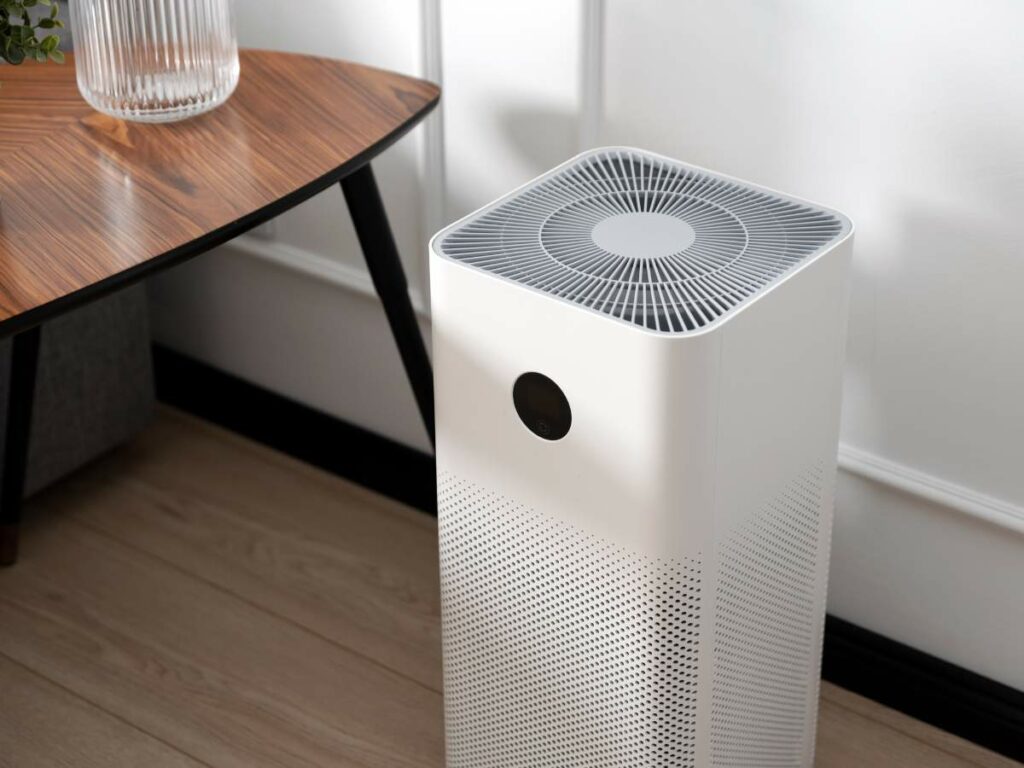
Improve Respiratory Health with Air Purifiers
In addition to decreasing your family’s overall risk for illnesses, using an air purifier, like this one from Medify Air, can also boost your respiratory health. Particles in the air can transmit viruses. They can also cause allergies, increase asthma complications and lead to chronic symptoms like coughing and congestion.
Dr. Paul Horvath, MD, at the Mayo Clinic recommends running an air purifier to reduce respiratory issues. This can help with respiratory issues by:
- Reducing the risk of respiratory illness by minimizing the concentration of germs in the air.
- Preventing reinfection in those already sick.
- Removing allergens like dander and pollen that can trigger asthma or allergy attacks.
- Trapping mold spores to prevent mold-related respiratory issues.
Breathing in clean air is ideal for everyone. If there are people in your home living with chronic respiratory conditions or who are at high risk for illnesses in wintertime, keeping your indoor environment healthy with air purification becomes a necessity.
Complementary Strategies to Use Alongside Air Purifiers
While air purifiers can remove much of the dust, germs and particulates in the air, they won’t get everything. A few additional strategies can help keep your family healthy throughout the winter.
It is important to practice routine health and safety habits. For instance, washing your hands, covering your mouth and nose when you sneeze or cough and staying current with vaccinations are essential in preventing the spread of germs around your home.
Improving Ventilation
You can also take other steps to improve air quality. Increasing the ventilation in your home is an excellent way to reduce the buildup of dust and pollutants. According to the Mayo Clinic, the more indoor air you can replace with outdoor air, the better your air quality. Consider these ideas to increase ventilation when outdoor temperatures are cold.
- Open your windows for a few minutes on warmer days.
- Run a bathroom ventilation fan.
- Use the outdoor air intake on your HVAC system when you run your furnace.
- Keep a fan running on low to circulate air.
Cleaning more frequently can also remove dust that might collect on surfaces. Regularly vacuuming, wiping down flat surfaces and washing linens will keep bacteria from entering your home’s air.
Non-Toxic Options
Using non-toxic laundry detergent can also significantly improve indoor air quality by reducing chemical emissions and allergens. Traditional detergents often contain harsh chemicals and synthetic fragrances that release harmful fumes, contributing to indoor air pollution and potential respiratory issues. Non-toxic alternatives are made with natural ingredients that do not emit these harmful substances.
I also recommend against lighting scented candles that are not made with natural ingredients and fragrances because they can emit harmful fumes. Opt for natural, non-toxic candles instead or make your own candles from tallow.
Improve Wintertime Health with An Air Purifier
If every winter has you anticipating the next time you will come down with a cold or the flu and chicken soup just doesn’t do the trick, or if a member of your family is struggling with asthma or allergies, poor indoor air quality might be to blame. Using an air purifier in your home can give you cleaner, healthier air with fewer pathogens.
An air purifier is invaluable as you battle winter illnesses. When used alongside basic health precautions, an air purifier can help you get over a cold, flu or allergies and stay healthy all season long.
Portions of this article originally appeared on Food Drink Life.

